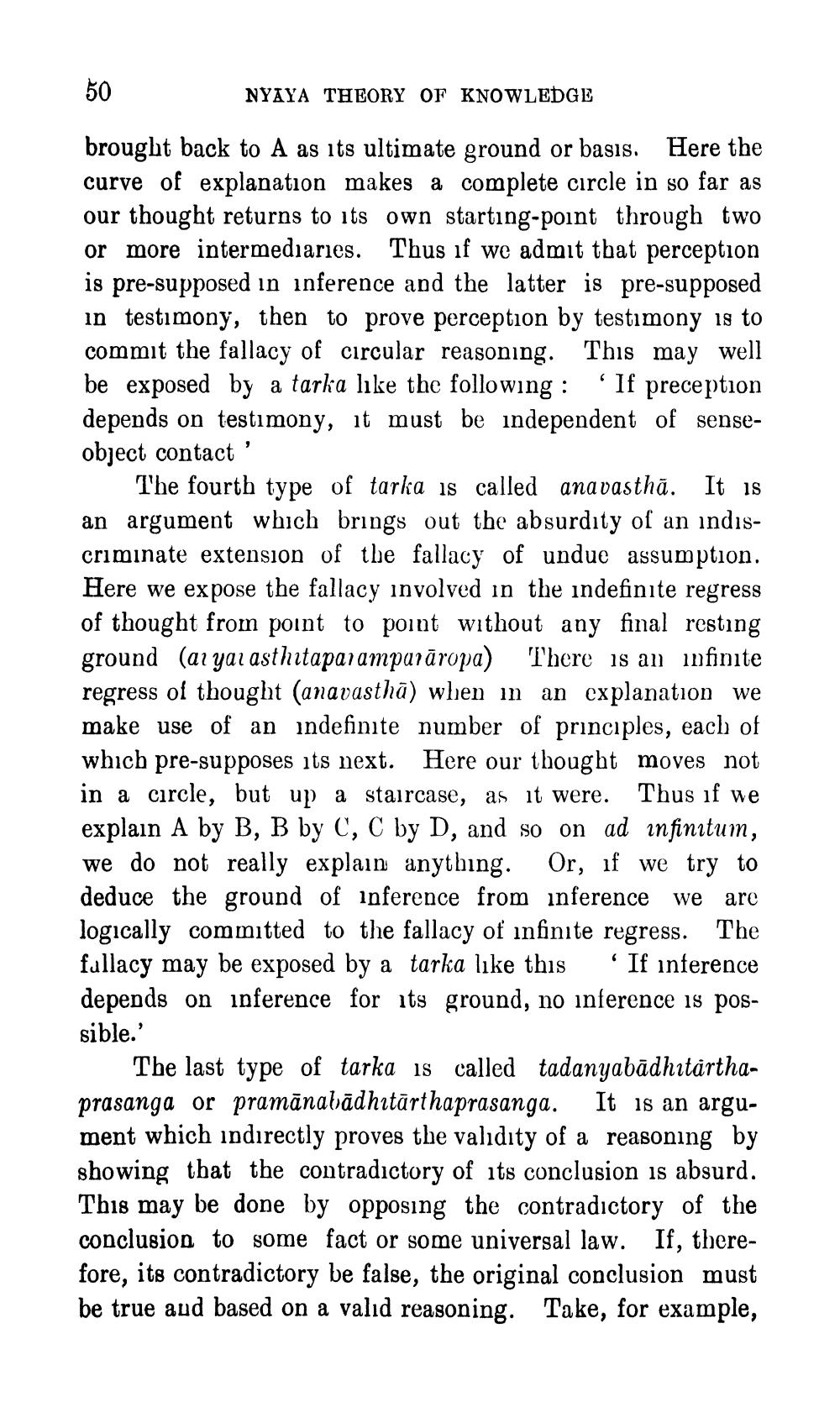________________
50
brought back to A as its ultimate ground or basis. Here the curve of explanation makes a complete circle in so far as our thought returns to its own starting-point through two or more intermediaries. Thus if we admit that perception is pre-supposed in inference and the latter is pre-supposed in testimony, then to prove perception by testimony is to commit the fallacy of circular reasoning. This may well be exposed by a tarka like the following: If preception depends on testimony, it must be independent of senseobject contact '
"
NYAYA THEORY OF KNOWLEDGE
The fourth type of tarka is called anavastha. It is an argument which brings out the absurdity of an indiscriminate extension of the fallacy of undue assumption. Here we expose the fallacy involved in the indefinite regress of thought from point to point without any final resting ground (ar yarasthitaparampararopa) There is an infinite regress of thought (anavastha) when in an explanation we make use of an indefinite number of principles, each of which pre-supposes its next. Here our thought moves not in a circle, but up a staircase, as it were. Thus if we explain A by B, B by C, C by D, and so on ad infinitum, we do not really explain anything. Or, if we try to deduce the ground of inference from inference we are logically committed to the fallacy of infinite regress. The fallacy may be exposed by a tarka like this 'If inference depends on inference for its ground, no inference is possible.'
The last type of tarka is called tadanyabādhitarthaprasanga or pramānabādhitārthaprasanga. It is an argument which indirectly proves the validity of a reasoning by showing that the contradictory of its conclusion is absurd. This may be done by opposing the contradictory of the conclusion to some fact or some universal law. If, therefore, its contradictory be false, the original conclusion must be true and based on a valid reasoning. Take, for example,




